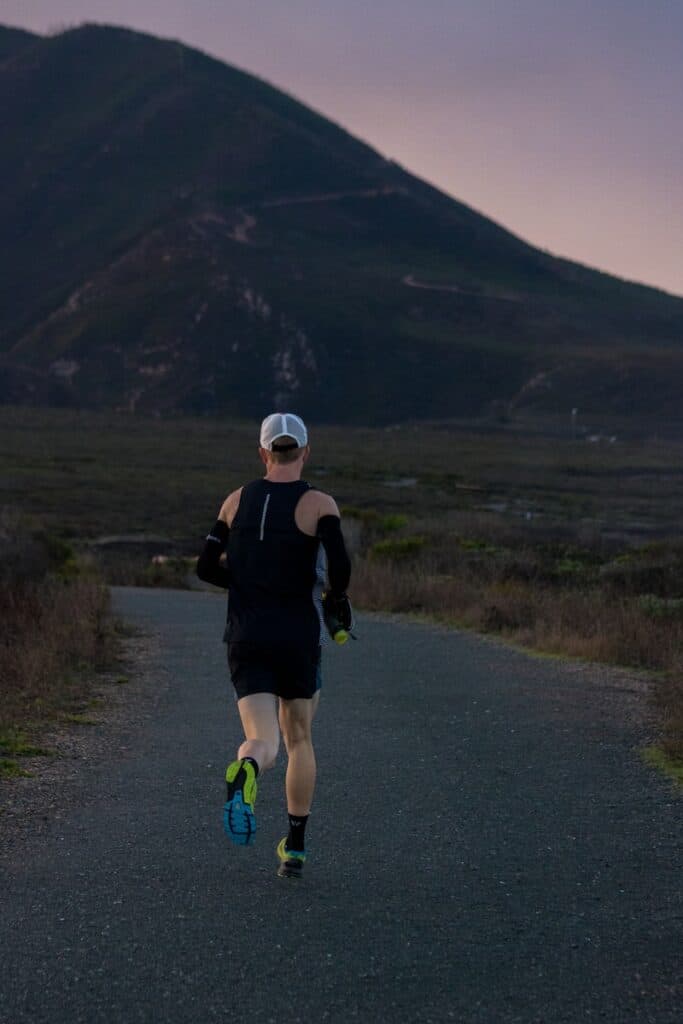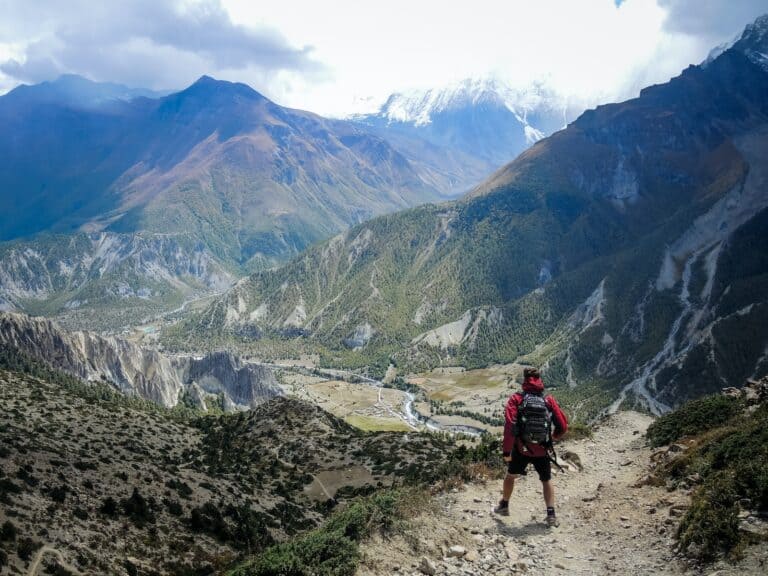Are you ready to take your running to the next level? If you’re looking for a new challenge and a way to connect with nature, then DIY trail running might be just what you need. Trail running offers a refreshing change of scenery from the monotony of road running, allowing you to explore rugged terrain, enjoy breathtaking views, and experience the thrill of conquering uneven trails.
To get started with DIY trail running, all you really need is a good pair of trail running shoes. These specialized shoes provide better traction on slippery surfaces and offer more stability on technical terrain. Lace up your own shoes and head out to local trails or find new ones in your area using online resources or trail maps. Whether you prefer groomed trails or rugged backcountry adventures, there’s something for every type of runner.
As you hit the trails, it’s important to keep safety in mind. Carry a hydration pack with water bottles or use hydration vests for longer runs. Pack essentials like a first aid kit, cell phone for emergencies, and even a small snack if you’ll be out for an extended period. Dress appropriately in moisture-wicking clothing such as a t-shirt and wool layers to regulate body temperature and prevent discomfort.
Keeping this trail running technique advice in mind, you are all set to dive into the realm of self-guided off-road running. Unearth new paths, push your limits on tougher terrains and tap into the thrill offered by elements beyond the ordinary trails. An exhilarating voyage to mother nature’s playfield awaits you. So, tie up those trail running shoes, pack your kit, and brace yourself!
Choosing the Right Shoes for DIY Trail Running
When it comes to DIY trail running, choosing the right shoes is crucial. The terrain you’ll encounter can vary from rugged trails with rocks and roots to groomed trails with even surfaces. To ensure a comfortable and safe run, here are some factors to consider when selecting your trail running shoes:

1. Traction: One of the most important features of trail running shoes is their ability to provide excellent traction on uneven terrain. Look for shoes that have aggressive lugs or a multidirectional tread pattern to grip the ground securely.
2. Stability: Since trails often feature uneven surfaces and technical terrain, stability is key. Opt for trail runners that offer good ankle support and have sturdy construction to prevent rolling your ankles.
3. Protection: Trail running exposes you to potential hazards such as rocks, branches, and other obstacles. Choose shoes with a protective toe cap and reinforced upper materials to guard against injuries.
4. Cushioning: Running on trails can be more demanding than road running due to the varied terrain. Select shoes with adequate cushioning in the midsole for extra shock absorption and comfort during long runs.
5. Breathability and Drainage: Trails can be wet, muddy, or dusty depending on the weather conditions you encounter. Look for shoes made from breathable materials that allow airflow while also having drainage ports or mesh panels to let water escape quickly.
Remember, every runner’s needs may vary based on personal preferences and foot characteristics, so it’s essential to try on different brands and models before making a final decision.
Essential Gear and Accessories for DIY Trail Running
When it comes to DIY trail running, having the right trail running gear and accessories can make all the difference in your experience. Here are some essential items that will help you navigate rugged trails and enjoy your trail runs to the fullest:

- Trail Running Shoes: Invest in a pair of trail running shoes that provide better traction and stability on uneven terrain. Look for ones with durable soles and adequate ankle support.
- Hydration Pack or Water Bottles: Staying hydrated is crucial during trail runs. Consider using a hydration pack or carrying water bottles to ensure you have enough fluids throughout your run.
- First Aid Kit: It’s always wise to be prepared for any unexpected injuries or mishaps. Carry a small first aid kit with essentials like band-aids, antiseptic wipes, and blister treatments.
- Trail Map or GPS Device: Before heading out on a new trail, make sure you have a map or use a GPS device to navigate your way back safely.
- Cell Phone: Keep your cell phone handy for emergency situations or if you need assistance while out on the trails.
- Proper Clothing: Dress appropriately for the weather conditions and choose moisture-wicking fabrics that keep you comfortable during longer runs. Layering with wool layers can help regulate body temperature.
- Snacks/Energy Gels/Electrolyte Mix: Fuel up before and during longer trail runs with snacks like energy gels or electrolyte mixes to replenish lost nutrients and maintain energy levels.
- Personal Safety Items: Consider carrying essentials like a house key, identification card, whistle, or even pepper spray depending on the location of your run.
Remember, when venturing into nature for trail running adventures, it’s important to respect other trail users and follow proper etiquette guidelines. Be mindful of leaving no trace behind and share the trails responsibly with hikers, mountain bikers, and other outdoor enthusiasts.
With these essential gear and accessories, you’ll be well-prepared to tackle any trail and enjoy the thrill of DIY trail running.
Exploring the Best DIY Trail Running Routes

When it comes to DIY trail running, there’s nothing quite like discovering new routes and exploring the great outdoors on your own terms. Whether you’re a seasoned trail runner or just starting out, finding the best trails can make all the difference in your running experience. Here are some tips to help you uncover and navigate the top DIY trail running routes:
- Research Local Trails: Start by researching local trails in your area using online resources or apps dedicated to mapping out trails. Look for trails that match your skill level and preferences, whether you prefer rugged terrains or groomed paths.
- Check Trail Maps: Once you’ve identified potential routes, obtain detailed trail maps to get an idea of the terrain, elevation changes, and distances involved. This will help you plan your run accordingly and ensure that you’re prepared for any challenges along the way.
- Consider Trail Difficulty: Keep in mind that different trails have varying levels of difficulty. Some may feature technical terrains with rocky sections, while others may be more gentle with smooth paths. Choose a trail that aligns with your fitness level and desired challenge.
- Prepare Proper Gear: Before hitting the trails, make sure you have the right gear for a safe and enjoyable run. Invest in a pair of reliable trail running shoes that provide better traction on uneven terrain. Additionally, consider carrying a hydration pack or vest to stay hydrated during longer runs, along with essential items such as a first aid kit, cell phone, house key, and possibly even electrolyte mixes for added energy.
- Follow Trail Etiquette: As responsible trail runners, it’s crucial to respect other trail users like hikers or mountain bikers who share the same paths as us. Yielding when necessary and maintaining proper etiquette ensures everyone can enjoy their outdoor activities without unnecessary conflicts.
- Stay Safe: When venturing into unfamiliar territory on solo runs, it’s important to prioritize safety. Let someone know your planned route and estimated return time, carry a cell phone for emergencies, and dress appropriately for the weather conditions. Additionally, keep an eye on your surroundings and avoid leaning too far forward on downhill sections to prevent potential injuries.
By adhering to these suggestions and discovering the top DIY routes for trail run in your locality, you’ll get the chance to immerse yourself in the magnificence of nature while pushing your physical limits. So, put on your running shoes, step onto the trails, and set off on an adrenaline-charged trail run journey crafted by you. Enjoy your run!
